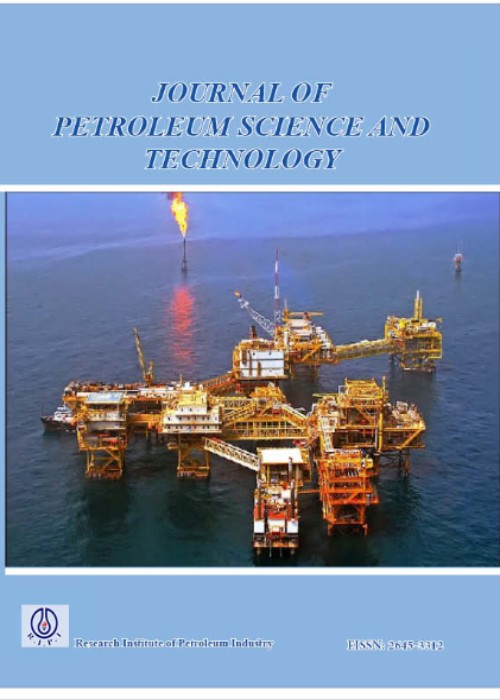A Case Study to Evaluate the Role of Basiluses in Producing Biosurfactant and the Feasibility of MEOR
Author(s):
Abstract:
Bibi Hakimeh oilfield consists of more than 145 oil producing wells. Its Oligomiocene Asmari reservoir is dominantly made of limestone. The act of a reverse fault on the north flank of Bibi-Hakimeh Field caused a significant thickness reduction in Gachsaran formation in the way that in some drilled wells, members No. 2, 3, 4, 5 and 6 of Gachsaran cap rock have been totally eliminated. This causes locating Asmari reservoir in a shallower level and therefore lowers reservoir temperature in the North flank already have made the reservoir suitable for a microbiological enhanced recovery. The long term production of this reservoir caused a significant reservoir pressure drop. Therefore; the recovery has been performed using Basilus with Ex-Situ method. In this case study, the feasibility of surfactant production in several oil wells has been accomplished. A high temperature resistant Basilus has been selected to evaluate the production ability of biosurfactant. This bacterium has been chosen after performing all morphological, biochemical and genetic studies. This bacteria shows a good resistance against the temperature in such manner that its emulsification, surface tension and inter surface tension abilities do not change after 15 min in an autoclave process at 120° C. In the next step, the temperature, pH, Carbon, N2 and other factors have been optimized for biosurfactant production. Considering the lithology of the reservoir using this type of bacterium. This can be a good way to produce lipopithidic biosurfactant by Ex-Situ method in Asmari to enhance oil recovery. The basilus, which has good resistance against temperature and acts well in pressurized environments, can be considered as a good candidate for tertiary enhanced oil recovery process. The best method to produce basilus in B5 is the Formislink method.
Keywords:
Language:
English
Published:
Journal of Petroleum Science and Technology, Volume:1 Issue: 1, Spring 2011
Pages:
60 to 67
magiran.com/p1128450
دانلود و مطالعه متن این مقاله با یکی از روشهای زیر امکان پذیر است:
اشتراک شخصی
با عضویت و پرداخت آنلاین حق اشتراک یکساله به مبلغ 1,390,000ريال میتوانید 70 عنوان مطلب دانلود کنید!
اشتراک سازمانی
به کتابخانه دانشگاه یا محل کار خود پیشنهاد کنید تا اشتراک سازمانی این پایگاه را برای دسترسی نامحدود همه کاربران به متن مطالب تهیه نمایند!
توجه!
- حق عضویت دریافتی صرف حمایت از نشریات عضو و نگهداری، تکمیل و توسعه مگیران میشود.
- پرداخت حق اشتراک و دانلود مقالات اجازه بازنشر آن در سایر رسانههای چاپی و دیجیتال را به کاربر نمیدهد.
In order to view content subscription is required
Personal subscription
Subscribe magiran.com for 70 € euros via PayPal and download 70 articles during a year.
Organization subscription
Please contact us to subscribe your university or library for unlimited access!


